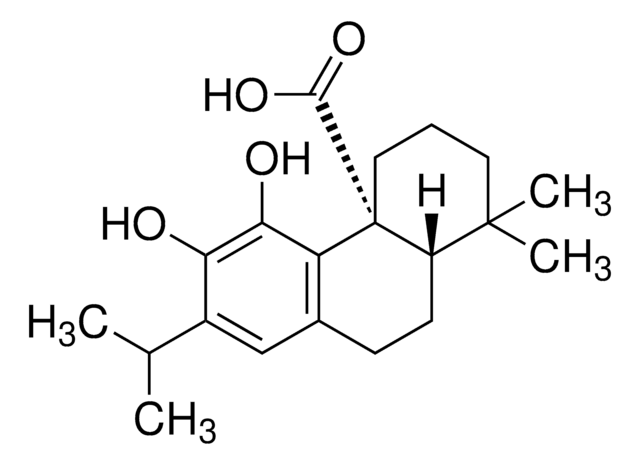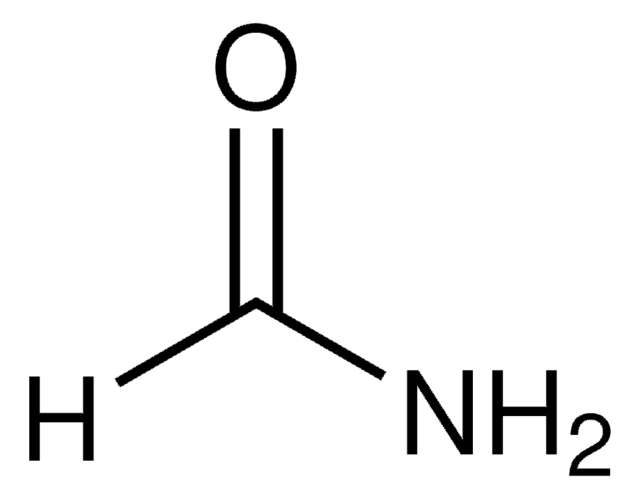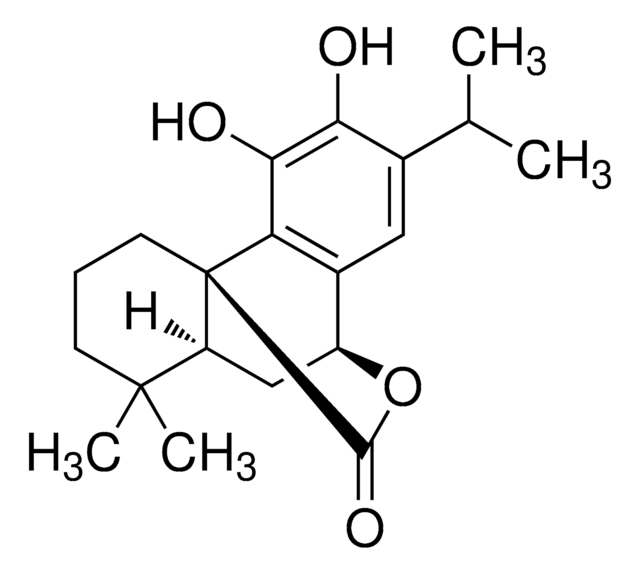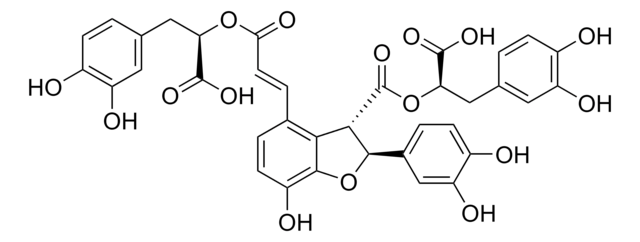Wichtige Dokumente
R4033
Rosmarinsäure
≥98% (HPLC), from Rosemarinus officinalis L.
Synonym(e):
(R)-O-(3,4-Dihydroxycinnamoyl)-3-(3,4-dihydroxyphenyl)-oxypropionsäure, 3,4-Dihydroxycinnaminsäure (R)-1-Carboxy-2-(3,4-dihydroxyphenyl)ethylester
About This Item
Empfohlene Produkte
Biologische Quelle
Rosemarinus officinalis L.
Qualitätsniveau
Assay
≥98% (HPLC)
Form
powder
Lagerbedingungen
protect from light
Farbe
white to faint beige
mp (Schmelzpunkt)
171-175 °C (lit.)
Löslichkeit
H2O: 1 mg/mL, clear, colorless
Anwendung(en)
metabolomics
vitamins, nutraceuticals, and natural products
Lagertemp.
2-8°C
SMILES String
OC(=O)[C@@H](Cc1ccc(O)c(O)c1)OC(=O)\C=C\c2ccc(O)c(O)c2
InChI
1S/C18H16O8/c19-12-4-1-10(7-14(12)21)3-6-17(23)26-16(18(24)25)9-11-2-5-13(20)15(22)8-11/h1-8,16,19-22H,9H2,(H,24,25)/b6-3+/t16-/m1/s1
InChIKey
DOUMFZQKYFQNTF-WUTVXBCWSA-N
Suchen Sie nach ähnlichen Produkten? Aufrufen Leitfaden zum Produktvergleich
Allgemeine Beschreibung
Anwendung
- to see its protective effects on the human endothelial cell line (EA.hy926) to treat diabetic atherosclerosis
- to test its effect in 1-Methyl-4-phenyl-1, 2, 3, 6-tetrahydropyridine (MPTP) induced Parkinson′s disease (PD) models on attenuating inflammatory responses and microglia activation
- to test its neuroprotective effects on dopaminergic neurons
- to test its effects on sperm motility, viability and on intracellular calcium ion concentration
- as a reference standard in capillary zone electrophoresis (CZE) method
Biochem./physiol. Wirkung
Lagerklassenschlüssel
11 - Combustible Solids
WGK
WGK 3
Flammpunkt (°F)
Not applicable
Flammpunkt (°C)
Not applicable
Analysenzertifikate (COA)
Suchen Sie nach Analysenzertifikate (COA), indem Sie die Lot-/Chargennummer des Produkts eingeben. Lot- und Chargennummern sind auf dem Produktetikett hinter den Wörtern ‘Lot’ oder ‘Batch’ (Lot oder Charge) zu finden.
Besitzen Sie dieses Produkt bereits?
In der Dokumentenbibliothek finden Sie die Dokumentation zu den Produkten, die Sie kürzlich erworben haben.
Kunden haben sich ebenfalls angesehen
Unser Team von Wissenschaftlern verfügt über Erfahrung in allen Forschungsbereichen einschließlich Life Science, Materialwissenschaften, chemischer Synthese, Chromatographie, Analytik und vielen mehr..
Setzen Sie sich mit dem technischen Dienst in Verbindung.






